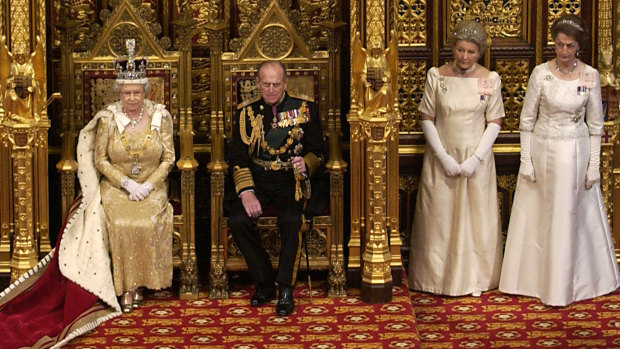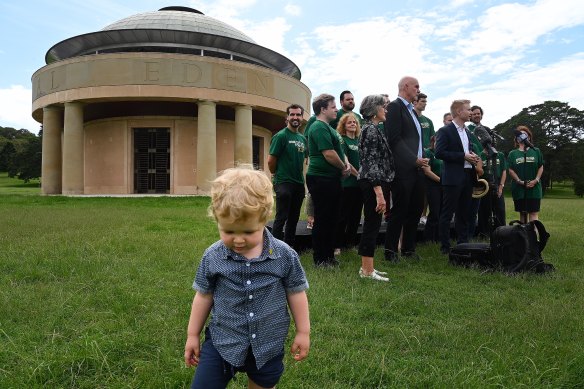This was published 2 years ago
Opinion
I would vote for the new republican model - but it’s got little chance of getting that far
Malcolm Turnbull
Former prime ministerAt the heart of the republic debate lies a paradox. An Australian president, almost all agree, should be a largely ceremonial figure like the Queen or the Governor-General. Such limited constitutional powers to be held by the president would be exercised in a scrupulously fair and apolitical manner.
And yet at the same time many Australians, perhaps most, would prefer that new Australian head of state to be directly elected by the people. Such an election would be a competitive and political contest. As Neville Wran wisely observed years ago: “If someone running for president wasn’t a politician when they nominated, they would be by the time they won.”

Queen Elizabeth, accompanied by Prince Philip and two ladies in waiting, opens Parliament in LondonCredit: Getty Images
That is why, more than 20 years ago, the Australian Republic Movement supported the new president being appointed by a two-thirds majority of a joint sitting of Parliament – ensuring bipartisan support for the new head of state.
This model was rejected, narrowly, at the 1999 referendum in large part because of a campaign by republicans who wanted to directly elect the president and joined with the monarchists to say no to what they described as “the politicians’ republic”.
This week the ARM has produced a new model where the president would be directly elected out of a field of up to 11 nominees; one presented by each state and territory legislature with three presented by the Federal Parliament. This curated approach to direct election is designed, so Peter FitzSimons has said, to ensure that only the right sort of person can be nominated.
If this perfectly workable model were presented in a referendum I would certainly vote for it. But I don’t think it is likely ever to be put to the people, let alone carry the day, if it were, because it will be seen by many to embody the weaknesses of direct election and parliamentary appointment models but the strengths of neither.

The Australian Republican Movement launches its new model for a new generation at Centennial Park on Wednesday.Credit: Kate Geraghty
If we are to have a directly elected president then any Australian citizen should be able to nominate. They shouldn’t need the permission of a bunch of politicians to run. In order to ensure the ballot paper isn’t unworkably huge, there could be a requirement for a minimum number of nominators – 5,000 or 10,000 perhaps – but beyond that it should be open slather. And if the people want to elect Shane Warne or Clive Palmer, Paul Keating or John Howard then so be it. The reality is that politicians will run and a politician will win, and one of them might run on a platform of “keeping those bastards in Parliament honest”.
In short, anything less than a presidential election open to all will be accused of being “just another politicians’ republic”.
During the republic campaign of the 1990s we invariably found that support for direct election was a mile wide and an inch deep. Many, sometimes most, supporters changed their mind when they realised that a highly competitive political contest would produce a partisan winner for what was meant to be a non-political role.

Facing the grim news ... Bob Hawke and Malcolm Turnbull digest the result of the republic referendum in 1999. Credit: Steve Lunam
An Australian head of state, in our parliamentary system, is better chosen by a method that is calculated to deliver a non-partisan figure who can secure wide support across the political spectrum and not just 50 per cent plus one. That is why I have supported the parliamentary appointment model.
But a directly elected president can work. There would need to be more and more express amendments to the Constitution spelling out the limited powers of the president. Legal scholar George Winterton and I drafted amendments to do that nearly 30 years ago and they would be a good place for today’s drafters to start.
But what won’t work is another referendum where the republicans are fighting on two fronts; against the supporters of the status quo and among themselves on which model is preferred. That is why I believe that the first step should be a national advisory plebiscite in which Australians are asked what mode of appointment they support. This debate over the models should be thrashed out and decided. The Australian people should own the model and they can do that by choosing it.
Once that is done, Parliament should prepare the legislation to incorporate that decision and put it to the people in a formal referendum to change the constitution.
Those are the only two votes that are needed. Some still argue for an advisory in-principle vote on whether Australia should be a republic. That would be smashed, with the no case arguing it was a blank cheque.
The next referendum should be after the end of the Queen’s reign. When that occurs, whether by her death or abdication, it will be a historical watershed, a time for reflection on the past and, most importantly, on the future.
At that point the republican cause has to enlist, and inspire, the confident spirit of Australia facing these remarkable times of change unprecedented in their scale and pace. Our nation’s best years are ahead of us, but only if we believe in ourselves, our nation and our destiny.
Malcolm Turnbull is a former prime minister and former head of the Australian Republican Movement.